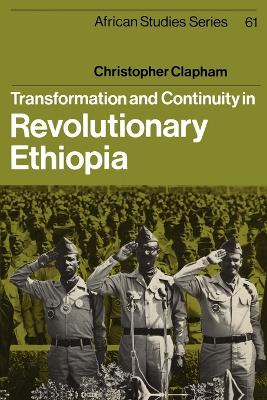African Studies
2 total works
Very similar in some ways, but strikingly different in others, Sierra Leone and Liberia have an obvious appeal for comparative analysis. They share the legacy of foundation by immigrants of African descent and the juxtaposition of these with indigenous peoples, but within the contrasting institutional frameworks of settler independence and British colonialism. They have similar social and economic structures but sharply dissimilar political records: Liberia has long been regarded as the classic case of stability at the price of oligarchy, whereas Sierra Leone, after a period as West Africa's most successful two-party democracy, suffered a succession of military coups and by 1973 was effectively a single-party state. This study seeks to analyse and account for both similarities and differences, looking at the two countries' experience in the 1960s and early 1970s, not only in central politics but also at the local level and in economic policy.
Transformation and Continuity in Revolutionary Ethiopia
by Christopher Clapham
Published 16 June 1988
This pioneering study was first published in 1988. It examines the effects of revolution on one of Africa's largest states. Christopher Clapham traces the continuities between revolutionary Ethiopia and the development of a centralised Ethiopian state since the nineteenth century, emphasising the institutionalisation of the revolutionary regime since 1978. He pays particular attention to the establishment of a Leninist political party and its associated mass organisations, the new apparatus of physical and economic control, and - critically important in Ethiopia - the effects of revolution on agricultural production. He also assesses the impact of revolution on national integration and regional conflict, and the reversal of Ethiopia's international alignment through alliance with the socialist states. A postscript to the paperback edition outlines events in Ethiopia between 1987 and 1990.

